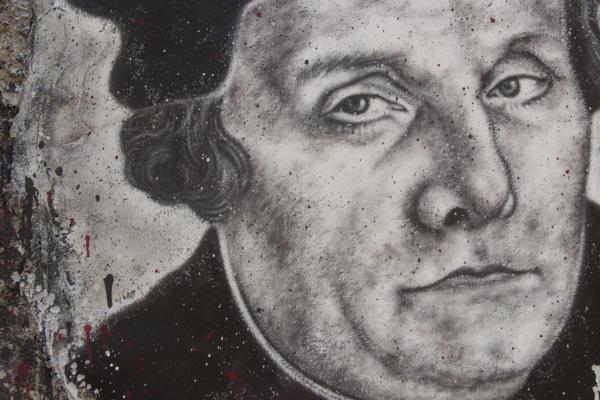ON Oct. 31, 1517, an intense 33-year-old Catholic monk with deep-set eyes and a prominent chin nailed an announcement of proposed points—95 theses—for a university discussion to the door of the Castle Church in Wittenberg, Germany. Martin Luther, a well-respected University of Wittenberg professor and administrator, was attacking the sale of indulgences by the Roman Catholic Church, in which the well-to-do “bought” their relatives out of purgatory by investing in “good works” for the church. Poorer people followed suit with a few coins.
Luther was far from the only critic of indulgences, but his action got attention. Intelligent and charismatic, he was not easily dismissed. He sparked the Protestant Reformation, marking its 500th anniversary this year, at that church door. This review touches on three Luther biographies: chiefly the new Martin Luther: Renegade and Prophet, by Lyndal Roper, the first woman named Regius Professor of History at Oxford University, but also Brand Luther, by Andrew Pettegree, and Martin Luther: Visionary Reformer, by Scott H. Hendrix.
Luther’s fame grew after he refused to recant his criticisms of the Catholic Church at the 1521 Diet of Worms, in front of Charles V, the Holy Roman Emperor. Luther was declared a heretic and excommunicated. This incident, Roper writes, “probably did more to win people over to the Reformation and shape their hopes and expectations than did his theology.”
Read the Full Article

